#I would love restaurants to serve root vegetables and stews in the winter and then spring greens in the early summer
Explore tagged Tumblr posts
Text
I wish there were more restaurants with affordable prix fixe or tasting menus. I would love for nice but not ridiculously fancy restaurants to basically say "here is what we're sure is good today, you can eat that or maybe one or two other things. Otherwise come back in 2-3 days and see if that's more interesting."
#I just want (a) cooks and chefs to get creative or think outside of the box; (b) menus that reflect changing seasons#I want you to have a seasonal menu! foods are better at different times of the year!#I would love restaurants to serve root vegetables and stews in the winter and then spring greens in the early summer#really lean into pickling and preserving; meats from animals in different developmental stages#obviously the fact that we can get access to so many different foods out of season is an incredible gift#(it involves labor and more bodies at work than I can contemplate without going mad)#but still. I think we should be occasionally reminded that chicagoans should not be able to eat bananas in february.#...........and (c) I want someone who isn't me to do all this.#no love sincerer than the love of food
58 notes
·
View notes
Text
5 Tips for Eating More Plant-Based Recipes
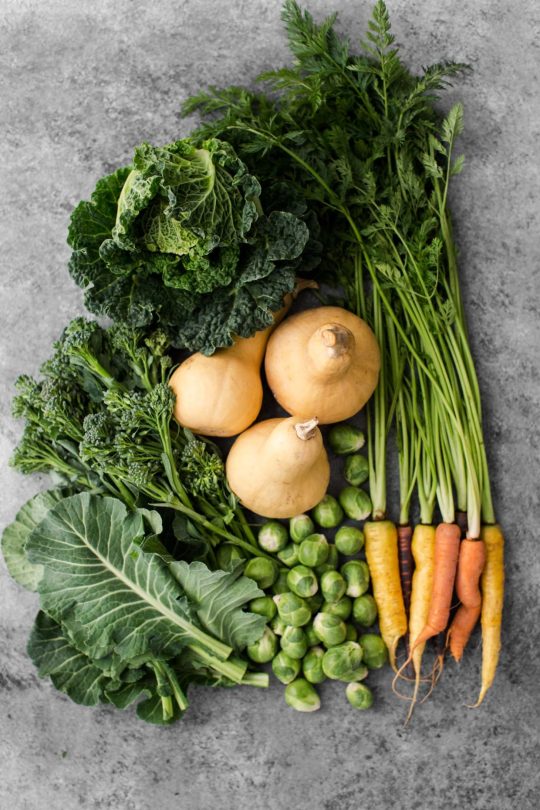
While I'm not a fan of 'let's change something major at the first of the year' mentality, I do believe there is benefit in setting a few small intentions for the upcoming months. When I talk to people about this, something around food always comes up, usually with an emphasis on eating more vegetables. Given that only about 10% of adults in the United States eat the recommended serving of vegetables (according to the CDC), it's a good emphasis to have.
And so, to start this new year, I thought I'd share five tips to get you on the path to eating more plants (and plant-based recipes). It's definitely a shift and not every member of your family may be onboard right away. I still get my fair-share of 'that looks disgusting' from my toddler. The most important part is trying. If you don't like something, that's cool- try something else. If you're on the fence, try it again but maybe in a different way.
It took me some time to grow to love many of the vegetables you see all over this site. It was a lot of trial and error but there's definitely items on my suspect list (I'm lookin' at you, mushrooms). So, without further preamble, my five tips to help you eat a bit more plant-based.
Plant-Based Recipes: Pantry, Pantry, Pantry
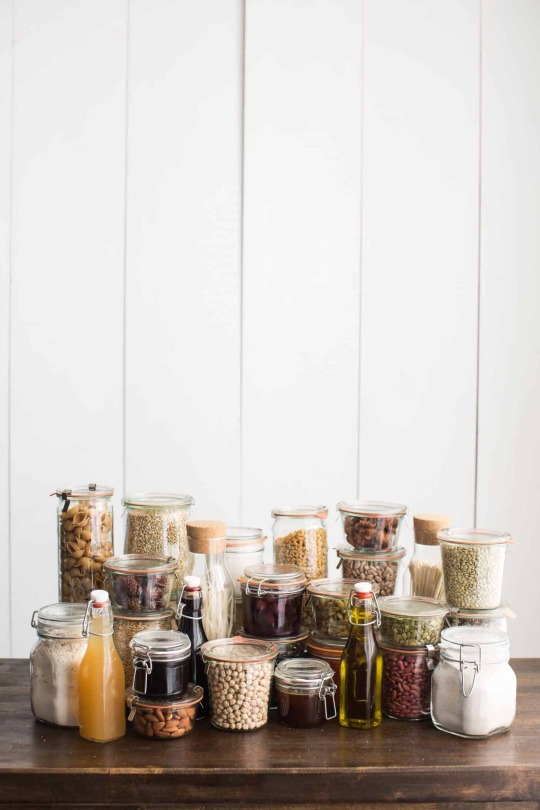
Somewhere around the house I have a print-out of a cookbook proposal all about the pantry. That should tell you how important I believe having a solid pantry is. It's the foundation for everything I do and it's the reason I'm able to cook without planning most of the time.
Best of all, you don't need an overabundance of items on hand. I like to keep my favorite things stocked at all times and then each week, pick one to two items that aren't staples/just for fun. For starters, I typically keep on hand:
Fats: Olive Oil, Ghee, Avocado Oil Vinegar: Champagne, Balsamic, Apple Cider Grains: Brown Rice, Quinoa, Millet, Einkorn, Farro Legumes: Chickpeas, Pinto, Black Beans, Green Lentils Nuts/Seeds: Pepitas, Pecans, Sunflower, Cashews Canned Tomatoes (crushed and tomato paste) Spices: Smoked Paprika, Coriander, Cumin, Cinnamon, Cloves Extras: Masa Harina (or tortillas, stashed in the freezer), Polenta, Pasta, Dried Chili Peppers, Tahini
I also count items like onions, garlic, shallots, celery, and ginger as 'pantry' items meaning, I always keep them on hand.
Have your Staple Components

I realize the word component is the least hip word I could choose for this section. However, it really encompasses exactly how I use these recipes. They become blocks that come together for a full meal. Master how to cook a solid pot of any variety of bean, make a creamy vegan sauce, and know your way around a simple way to spruce of greens and veg. The recipes below are the foundation for most meals during the week.
Perfect Pot of Beans
When it comes to plant-based recipes in our house, there is nothing as seemingly as important as a solid pot of beans. Sure, it's a bit more involved than buying a can at the grocery store. However, it's easier to manipulate the flavors to your liking. Of course, if you don't have time, buying cans of beans can be just as useful.
youtube
Uses for a perfect pot of beans:
Polenta topped with beans
Three Bean Chili
Curried Chickpea Stuffed Pita
Pinto Bean Tostadas
Garlicky Bean Toast
Cashew/Sunflower Cream Sauce
Cashew cream is one of those recipes that seemingly got a ton of hype in the vegan world but is amazingly useful across any kind of recipe. Over the years, I've started making sunflower cream a bit more, primarily because it's cheaper. These cream sauces work well as sauces and dips. Add herbs, garlic, harissa, romesco, chimichurri, smoked alliums- there are hundreds of ways to work with this simple recipe.
youtube
Uses for nut/seed creams:
Kohlrabi Fritters
Roasted Veg Chickpea Bowls
Carrot Ginger Noodles
Roasted Rutabaga Pasta
Kale Pasta
Garlicky Greens
Greens are some of the best bang for your buck at the stores and markets. During the cooler months, it's easy to feel completely overwhelmed with what to do with all the incoming chard and kale. Having a simple recipe, like these garlicky greens, can save you the sadness of having to throw those old droopy greens away. Best of all, I love this easy combination with chard, kale, spinach, collards, and some varieties of Asian greens.
Uses for Garlicky Greens
Kale Farro Risotto
Garlicky Kale Pizza
Savory Oat with Garlicky Greens
Quinoa Chard Frittata
Berbere Chickpeas and Chard
Multigrain Pilaf
When it comes to grains, you can easily cook whatever grain you have on hand but something magical happens when you start combining them. Different flavors and textures come together in one pot, making the perfect base for grain bowls, salads, or curries. This is also a great way to use up small bits of grains you might have leftover.
Uses for Grain Pilaf
Roasted Carrots with Multigrains
Fried Cauliflower with Grains and Romesco
Potato Green Curry over Grains
Sweet Potato Skewers over Grains
Roasted Vegetables
Finally, the all-encompassing roasted vegetable. When it doubt, cut any vegetable into bite-sized pieces, toss with a bit of oil and salt, then roast at 425˚F until tender and starting to brown. It's really hard to go wrong and the best part, most vegetables don't even need to be peeled (except for a few winter squash/celeriac). Serve roasted vegetables as a side or add to grain bowls, tacos, frittatas, etc.
Uses for Grain Pilaf
Roasted Mole Cauliflower
Einkorn Risotto with Roasted Asparagus
Scallion Roasted Carrots
Roasted Sweet Potato Salad with Butter Dressing
Roasted Sunchoke Salad
Root to Tip and Everything In Between
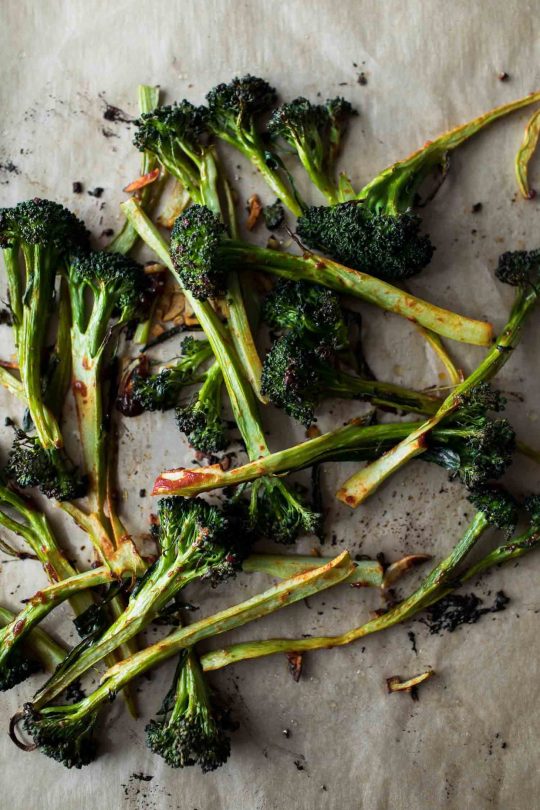
Have you ever bought a few stalks of broccoli only to be sad that you ended up throwing away half of what you paid for because it was mostly stalks? What about buying the most lovely carrots with their greens still attached, only to throw away the greens? It doesn't have to be that way. And the more you work with the entire vegetable, the more comfortable you become knowing how to treat each part.
The Whole Vegetable, together
Broccoli: Broccoli stalks are down right delicious, however, if you treat the stalks as you would the florets, you will end up really disappointed. For the stalks, you need to trim the tough ends, peel the tough exterior, and plan to cook the stalks a bit longer than you would the florets. I like to steam the stems and make fritters. Another option is to parboil the stems then roasted along-side the florets. Or, cook in a broccoli soup and puree with the florets.
Cauliflower: One of my recent favorite discoveries was smoking wedges of cauliflower (leaves/greens still attached). All parts of the cauliflower are edible and can easily be roasted or grilled along with the florets. There's no major taste difference and it creates a beautiful presentation.
The Vegetable, in parts
Beets (and turnips): One beet can easily provide two different meals. The root is what we're most familiar with but the greens are edible. They can be a bit bitter sometimes, but I've had my best luck adding them to stews or cooking with other hearty greens like kale or chard.
Carrots: I like to put carrot tops in the same category as herbs. If parsley can do it, most likely carrot tops will fit right in. Similar to the beets, they can be a bit bitter. And so, I like to pair them with other herbs and stronger flavors. Think pesto, chimichurri, or a lovely gremolata.
Finally, it pays to save. Save all those vegetable scraps and make stock. I keep a bag in the freezer that I constantly add scraps to. Eventually, when I get enough, I'm able to make a delicious, homemade vegetable stock.
Jump into flavors

When it comes to plant-based recipes, I find people shy away from bold flavors. You can season a piece of meat, so why can't you flavor a piece of cauliflower or sweet potato? In some ways, I think you have more options, more ways to play. Each vegetable is different. Some things work, some things don't.
That, however, is the beautiful part of cooking. And so, I urge you to dig into your spice cabinet. Experiment with chili peppers. Use more herbs than you've ever used before (this is also a good push to start a small herb garden- they work so well even in pots!)
Herbs (and herb sauces)
Herbs are your friend. Use them as toppings, blend them into delicious sauces, or add them to cooked vegetables. I'm not talking about a tablespoon or two, either. I'm talking about handfuls. Herbs can help make or break a dish. Try your hand at an herb-based sauce or a heavily-herbed recipe:
Chimichurri
Herby Hemp Sauce
17 ways to use up cilantro and parsley
Herbed Cucumber Salad
Spices/Spice Blends
So many cultures don't shy away from bold spice flavors and yet, for many vegetarian/vegan dishes in the United States, they can be so bland. Pull out that coriander, use cinnamon in a savory dish, or try your hand at making homemade spice blends, perfectly suited for roasted vegetables.
Kale Baked Eggs with Dukkah
Spiced Lentil Stew
Za'atar Roasted Tomato Salad
Spiced Chickpeas
Adobo Roasted Acorn Squash
Chili Peppers
Finally, get to know dried peppers. It doesn't always have to be heat-driven. Many delicious varieties of dried chili peppers are low on the heat scale. However, they provide just enough zing to complete the meal. Plus, dried chili peppers last quite some time, making them a perfect addition to your pantry.
Don't Over-Complicate

Finally, my parting advice. You're not a restaurant seeking fame and fortune. Keep your meals and plant-based recipes simple. I'll often make a main dish and pair it with a simple salad and some roasted vegetables. My goal each evening is to be very vegetable heavy and pair it with something solid on protein. Actual dinners I've served include:
Whole grain risotto (like this butternut squash one) served with a simple side salad that consists of greens, chickpeas, toasted seeds, and a simple lemon vinaigrette. Occasionally I'll add other roasted vegetables, like Brussels spouts or asparagus as a side.
Quinoa cakes, usually with spinach and a simple dipping sauce served with a simple roasted vegetable like sweet potatoes, squash, or turnips and a small side of in-season fruit. A very toddler-friendly meal!
For a summer take, this summer squash paella served with a side of these garlicky green beans and some fresh tomatoes sprinkled with sea salt.
Any kind of bean/grain bowls, like this curried chickpea bowl, paired with a side salad and roasted vegetables. I've also been known to serve this as a soup/grain-bowl combination as well.
Halloumi Tacos served with a side of roasted vegetables and some spiced beans/rice. The roasted vegetables could be simple or you could easily jazz up the vegetables with some spice, like in this chipotle red kuri squash.
continue reading
The post 5 Tips for Eating More Plant-Based Recipes appeared first on Naturally..
0 notes
Text
5 Tips for Eating More Plant-Based Recipes
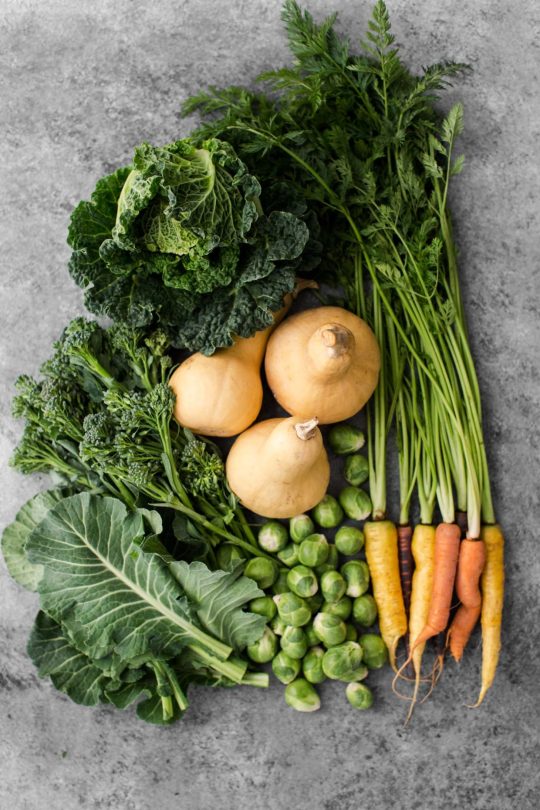
While I'm not a fan of 'let's change something major at the first of the year' mentality, I do believe there is benefit in setting a few small intentions for the upcoming months. When I talk to people about this, something around food always comes up, usually with an emphasis on eating more vegetables. Given that only about 10% of adults in the United States eat the recommended serving of vegetables (according to the CDC), it's a good emphasis to have.
And so, to start this new year, I thought I'd share five tips to get you on the path to eating more plants (and plant-based recipes). It's definitely a shift and not every member of your family may be onboard right away. I still get my fair-share of 'that looks disgusting' from my toddler. The most important part is trying. If you don't like something, that's cool- try something else. If you're on the fence, try it again but maybe in a different way.
It took me some time to grow to love many of the vegetables you see all over this site. It was a lot of trial and error but there's definitely items on my suspect list (I'm lookin' at you, mushrooms). So, without further preamble, my five tips to help you eat a bit more plant-based.
Plant-Based Recipes: Pantry, Pantry, Pantry

Somewhere around the house I have a print-out of a cookbook proposal all about the pantry. That should tell you how important I believe having a solid pantry is. It's the foundation for everything I do and it's the reason I'm able to cook without planning most of the time.
Best of all, you don't need an overabundance of items on hand. I like to keep my favorite things stocked at all times and then each week, pick one to two items that aren't staples/just for fun. For starters, I typically keep on hand:
Fats: Olive Oil, Ghee, Avocado Oil Vinegar: Champagne, Balsamic, Apple Cider Grains: Brown Rice, Quinoa, Millet, Einkorn, Farro Legumes: Chickpeas, Pinto, Black Beans, Green Lentils Nuts/Seeds: Pepitas, Pecans, Sunflower, Cashews Canned Tomatoes (crushed and tomato paste) Spices: Smoked Paprika, Coriander, Cumin, Cinnamon, Cloves Extras: Masa Harina (or tortillas, stashed in the freezer), Polenta, Pasta, Dried Chili Peppers, Tahini
I also count items like onions, garlic, shallots, celery, and ginger as 'pantry' items meaning, I always keep them on hand.
Have your Staple Components
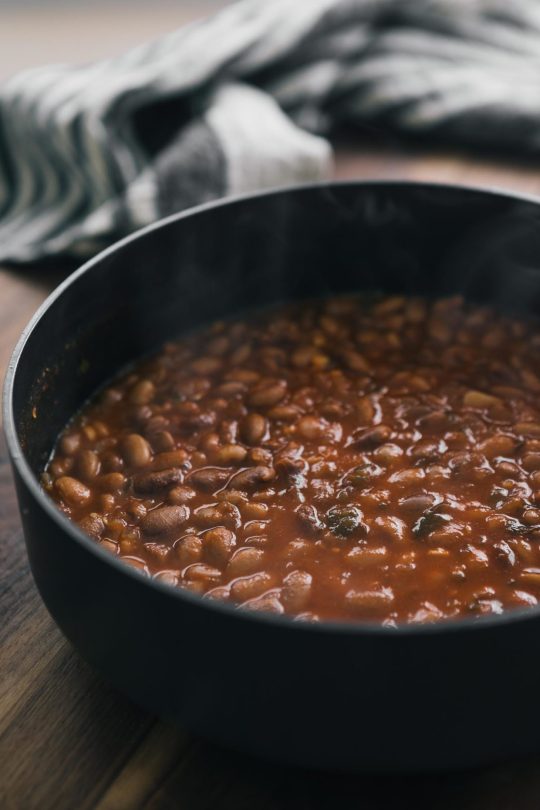
I realize the word component is the least hip word I could choose for this section. However, it really encompasses exactly how I use these recipes. They become blocks that come together for a full meal. Master how to cook a solid pot of any variety of bean, make a creamy vegan sauce, and know your way around a simple way to spruce of greens and veg. The recipes below are the foundation for most meals during the week.
Perfect Pot of Beans
When it comes to plant-based recipes in our house, there is nothing as seemingly as important as a solid pot of beans. Sure, it's a bit more involved than buying a can at the grocery store. However, it's easier to manipulate the flavors to your liking. Of course, if you don't have time, buying cans of beans can be just as useful.
youtube
Uses for a perfect pot of beans:
Polenta topped with beans
Three Bean Chili
Curried Chickpea Stuffed Pita
Pinto Bean Tostadas
Garlicky Bean Toast
Cashew/Sunflower Cream Sauce
Cashew cream is one of those recipes that seemingly got a ton of hype in the vegan world but is amazingly useful across any kind of recipe. Over the years, I've started making sunflower cream a bit more, primarily because it's cheaper. These cream sauces work well as sauces and dips. Add herbs, garlic, harissa, romesco, chimichurri, smoked alliums- there are hundreds of ways to work with this simple recipe.
youtube
Uses for nut/seed creams:
Kohlrabi Fritters
Roasted Veg Chickpea Bowls
Carrot Ginger Noodles
Roasted Rutabaga Pasta
Kale Pasta
Garlicky Greens
Greens are some of the best bang for your buck at the stores and markets. During the cooler months, it's easy to feel completely overwhelmed with what to do with all the incoming chard and kale. Having a simple recipe, like these garlicky greens, can save you the sadness of having to throw those old droopy greens away. Best of all, I love this easy combination with chard, kale, spinach, collards, and some varieties of Asian greens.
Uses for Garlicky Greens
Kale Farro Risotto
Garlicky Kale Pizza
Savory Oat with Garlicky Greens
Quinoa Chard Frittata
Berbere Chickpeas and Chard
Multigrain Pilaf
When it comes to grains, you can easily cook whatever grain you have on hand but something magical happens when you start combining them. Different flavors and textures come together in one pot, making the perfect base for grain bowls, salads, or curries. This is also a great way to use up small bits of grains you might have leftover.
Uses for Grain Pilaf
Roasted Carrots with Multigrains
Fried Cauliflower with Grains and Romesco
Potato Green Curry over Grains
Sweet Potato Skewers over Grains
Roasted Vegetables
Finally, the all-encompassing roasted vegetable. When it doubt, cut any vegetable into bite-sized pieces, toss with a bit of oil and salt, then roast at 425˚F until tender and starting to brown. It's really hard to go wrong and the best part, most vegetables don't even need to be peeled (except for a few winter squash/celeriac). Serve roasted vegetables as a side or add to grain bowls, tacos, frittatas, etc.
Uses for Grain Pilaf
Roasted Mole Cauliflower
Einkorn Risotto with Roasted Asparagus
Scallion Roasted Carrots
Roasted Sweet Potato Salad with Butter Dressing
Roasted Sunchoke Salad
Root to Tip and Everything In Between
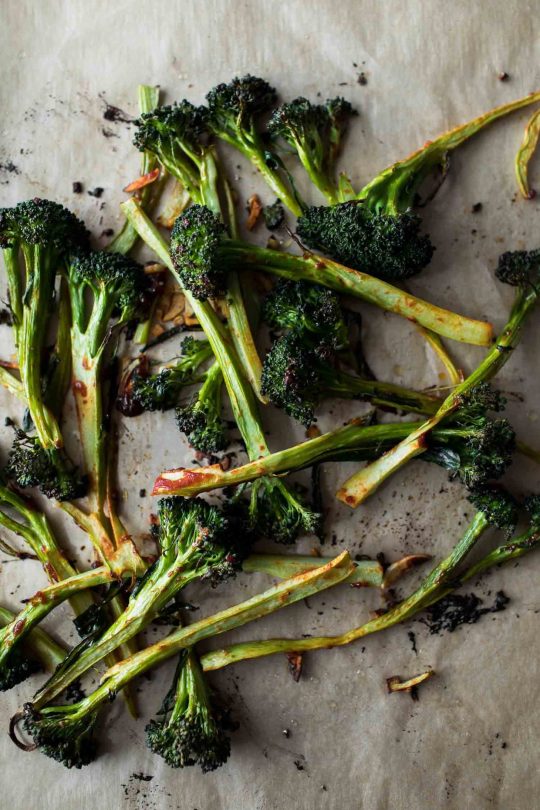
Have you ever bought a few stalks of broccoli only to be sad that you ended up throwing away half of what you paid for because it was mostly stalks? What about buying the most lovely carrots with their greens still attached, only to throw away the greens? It doesn't have to be that way. And the more you work with the entire vegetable, the more comfortable you become knowing how to treat each part.
The Whole Vegetable, together
Broccoli: Broccoli stalks are down right delicious, however, if you treat the stalks as you would the florets, you will end up really disappointed. For the stalks, you need to trim the tough ends, peel the tough exterior, and plan to cook the stalks a bit longer than you would the florets. I like to steam the stems and make fritters. Another option is to parboil the stems then roasted along-side the florets. Or, cook in a broccoli soup and puree with the florets.
Cauliflower: One of my recent favorite discoveries was smoking wedges of cauliflower (leaves/greens still attached). All parts of the cauliflower are edible and can easily be roasted or grilled along with the florets. There's no major taste difference and it creates a beautiful presentation.
The Vegetable, in parts
Beets (and turnips): One beet can easily provide two different meals. The root is what we're most familiar with but the greens are edible. They can be a bit bitter sometimes, but I've had my best luck adding them to stews or cooking with other hearty greens like kale or chard.
Carrots: I like to put carrot tops in the same category as herbs. If parsley can do it, most likely carrot tops will fit right in. Similar to the beets, they can be a bit bitter. And so, I like to pair them with other herbs and stronger flavors. Think pesto, chimichurri, or a lovely gremolata.
Finally, it pays to save. Save all those vegetable scraps and make stock. I keep a bag in the freezer that I constantly add scraps to. Eventually, when I get enough, I'm able to make a delicious, homemade vegetable stock.
Jump into flavors

When it comes to plant-based recipes, I find people shy away from bold flavors. You can season a piece of meat, so why can't you flavor a piece of cauliflower or sweet potato? In some ways, I think you have more options, more ways to play. Each vegetable is different. Some things work, some things don't.
That, however, is the beautiful part of cooking. And so, I urge you to dig into your spice cabinet. Experiment with chili peppers. Use more herbs than you've ever used before (this is also a good push to start a small herb garden- they work so well even in pots!)
Herbs (and herb sauces)
Herbs are your friend. Use them as toppings, blend them into delicious sauces, or add them to cooked vegetables. I'm not talking about a tablespoon or two, either. I'm talking about handfuls. Herbs can help make or break a dish. Try your hand at an herb-based sauce or a heavily-herbed recipe:
Chimichurri
Herby Hemp Sauce
17 ways to use up cilantro and parsley
Herbed Cucumber Salad
Spices/Spice Blends
So many cultures don't shy away from bold spice flavors and yet, for many vegetarian/vegan dishes in the United States, they can be so bland. Pull out that coriander, use cinnamon in a savory dish, or try your hand at making homemade spice blends, perfectly suited for roasted vegetables.
Kale Baked Eggs with Dukkah
Spiced Lentil Stew
Za'atar Roasted Tomato Salad
Spiced Chickpeas
Adobo Roasted Acorn Squash
Chili Peppers
Finally, get to know dried peppers. It doesn't always have to be heat-driven. Many delicious varieties of dried chili peppers are low on the heat scale. However, they provide just enough zing to complete the meal. Plus, dried chili peppers last quite some time, making them a perfect addition to your pantry.
Don't Over-Complicate

Finally, my parting advice. You're not a restaurant seeking fame and fortune. Keep your meals and plant-based recipes simple. I'll often make a main dish and pair it with a simple salad and some roasted vegetables. My goal each evening is to be very vegetable heavy and pair it with something solid on protein. Actual dinners I've served include:
Whole grain risotto (like this butternut squash one) served with a simple side salad that consists of greens, chickpeas, toasted seeds, and a simple lemon vinaigrette. Occasionally I'll add other roasted vegetables, like Brussels spouts or asparagus as a side.
Quinoa cakes, usually with spinach and a simple dipping sauce served with a simple roasted vegetable like sweet potatoes, squash, or turnips and a small side of in-season fruit. A very toddler-friendly meal!
For a summer take, this summer squash paella served with a side of these garlicky green beans and some fresh tomatoes sprinkled with sea salt.
Any kind of bean/grain bowls, like this curried chickpea bowl, paired with a side salad and roasted vegetables. I've also been known to serve this as a soup/grain-bowl combination as well.
Halloumi Tacos served with a side of roasted vegetables and some spiced beans/rice. The roasted vegetables could be simple or you could easily jazz up the vegetables with some spice, like in this chipotle red kuri squash.
continue reading
The post 5 Tips for Eating More Plant-Based Recipes appeared first on Naturally..
0 notes
Text
5 Tips for Eating More Plant-Based Recipes

While I'm not a fan of 'let's change something major at the first of the year' mentality, I do believe there is benefit in setting a few small intentions for the upcoming months. When I talk to people about this, something around food always comes up, usually with an emphasis on eating more vegetables. Given that only about 10% of adults in the United States eat the recommended serving of vegetables (according to the CDC), it's a good emphasis to have.
And so, to start this new year, I thought I'd share five tips to get you on the path to eating more plants (and plant-based recipes). It's definitely a shift and not every member of your family may be onboard right away. I still get my fair-share of 'that looks disgusting' from my toddler. The most important part is trying. If you don't like something, that's cool- try something else. If you're on the fence, try it again but maybe in a different way.
It took me some time to grow to love many of the vegetables you see all over this site. It was a lot of trial and error but there's definitely items on my suspect list (I'm lookin' at you, mushrooms). So, without further preamble, my five tips to help you eat a bit more plant-based.
Plant-Based Recipes: Pantry, Pantry, Pantry

Somewhere around the house I have a print-out of a cookbook proposal all about the pantry. That should tell you how important I believe having a solid pantry is. It's the foundation for everything I do and it's the reason I'm able to cook without planning most of the time.
Best of all, you don't need an overabundance of items on hand. I like to keep my favorite things stocked at all times and then each week, pick one to two items that aren't staples/just for fun. For starters, I typically keep on hand:
Fats: Olive Oil, Ghee, Avocado Oil Vinegar: Champagne, Balsamic, Apple Cider Grains: Brown Rice, Quinoa, Millet, Einkorn, Farro Legumes: Chickpeas, Pinto, Black Beans, Green Lentils Nuts/Seeds: Pepitas, Pecans, Sunflower, Cashews Canned Tomatoes (crushed and tomato paste) Spices: Smoked Paprika, Coriander, Cumin, Cinnamon, Cloves Extras: Masa Harina (or tortillas, stashed in the freezer), Polenta, Pasta, Dried Chili Peppers, Tahini
I also count items like onions, garlic, shallots, celery, and ginger as 'pantry' items meaning, I always keep them on hand.
Have your Staple Components
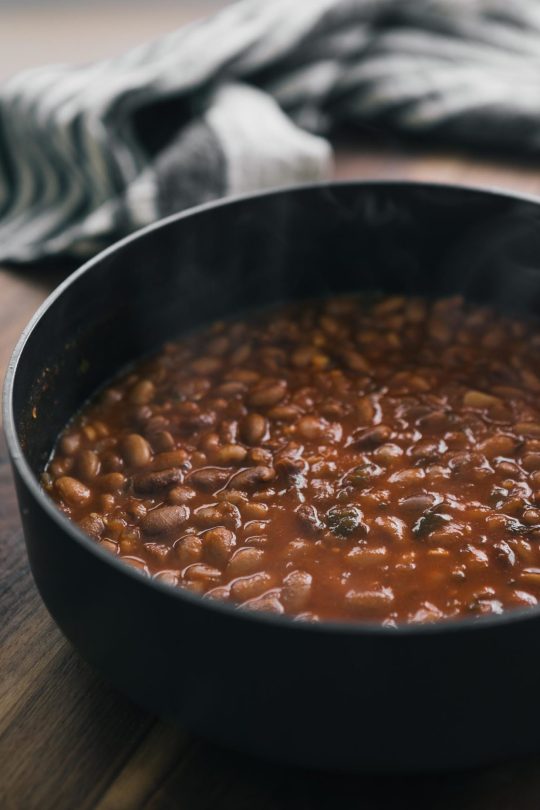
I realize the word component is the least hip word I could choose for this section. However, it really encompasses exactly how I use these recipes. They become blocks that come together for a full meal. Master how to cook a solid pot of any variety of bean, make a creamy vegan sauce, and know your way around a simple way to spruce of greens and veg. The recipes below are the foundation for most meals during the week.
Perfect Pot of Beans
When it comes to plant-based recipes in our house, there is nothing as seemingly as important as a solid pot of beans. Sure, it's a bit more involved than buying a can at the grocery store. However, it's easier to manipulate the flavors to your liking. Of course, if you don't have time, buying cans of beans can be just as useful.
youtube
Uses for a perfect pot of beans:
Polenta topped with beans
Three Bean Chili
Curried Chickpea Stuffed Pita
Pinto Bean Tostadas
Garlicky Bean Toast
Cashew/Sunflower Cream Sauce
Cashew cream is one of those recipes that seemingly got a ton of hype in the vegan world but is amazingly useful across any kind of recipe. Over the years, I've started making sunflower cream a bit more, primarily because it's cheaper. These cream sauces work well as sauces and dips. Add herbs, garlic, harissa, romesco, chimichurri, smoked alliums- there are hundreds of ways to work with this simple recipe.
youtube
Uses for nut/seed creams:
Kohlrabi Fritters
Roasted Veg Chickpea Bowls
Carrot Ginger Noodles
Roasted Rutabaga Pasta
Kale Pasta
Garlicky Greens
Greens are some of the best bang for your buck at the stores and markets. During the cooler months, it's easy to feel completely overwhelmed with what to do with all the incoming chard and kale. Having a simple recipe, like these garlicky greens, can save you the sadness of having to throw those old droopy greens away. Best of all, I love this easy combination with chard, kale, spinach, collards, and some varieties of Asian greens.
Uses for Garlicky Greens
Kale Farro Risotto
Garlicky Kale Pizza
Savory Oat with Garlicky Greens
Quinoa Chard Frittata
Berbere Chickpeas and Chard
Multigrain Pilaf
When it comes to grains, you can easily cook whatever grain you have on hand but something magical happens when you start combining them. Different flavors and textures come together in one pot, making the perfect base for grain bowls, salads, or curries. This is also a great way to use up small bits of grains you might have leftover.
Uses for Grain Pilaf
Roasted Carrots with Multigrains
Fried Cauliflower with Grains and Romesco
Potato Green Curry over Grains
Sweet Potato Skewers over Grains
Roasted Vegetables
Finally, the all-encompassing roasted vegetable. When it doubt, cut any vegetable into bite-sized pieces, toss with a bit of oil and salt, then roast at 425˚F until tender and starting to brown. It's really hard to go wrong and the best part, most vegetables don't even need to be peeled (except for a few winter squash/celeriac). Serve roasted vegetables as a side or add to grain bowls, tacos, frittatas, etc.
Uses for Grain Pilaf
Roasted Mole Cauliflower
Einkorn Risotto with Roasted Asparagus
Scallion Roasted Carrots
Roasted Sweet Potato Salad with Butter Dressing
Roasted Sunchoke Salad
Root to Tip and Everything In Between
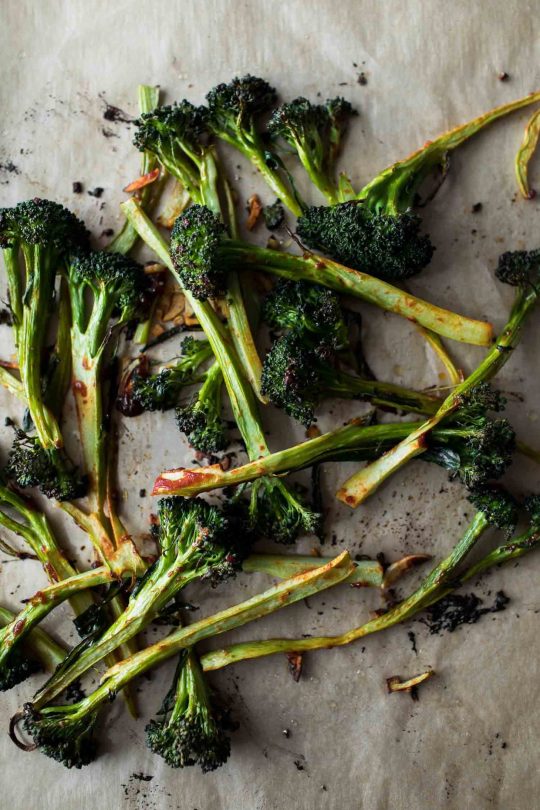
Have you ever bought a few stalks of broccoli only to be sad that you ended up throwing away half of what you paid for because it was mostly stalks? What about buying the most lovely carrots with their greens still attached, only to throw away the greens? It doesn't have to be that way. And the more you work with the entire vegetable, the more comfortable you become knowing how to treat each part.
The Whole Vegetable, together
Broccoli: Broccoli stalks are down right delicious, however, if you treat the stalks as you would the florets, you will end up really disappointed. For the stalks, you need to trim the tough ends, peel the tough exterior, and plan to cook the stalks a bit longer than you would the florets. I like to steam the stems and make fritters. Another option is to parboil the stems then roasted along-side the florets. Or, cook in a broccoli soup and puree with the florets.
Cauliflower: One of my recent favorite discoveries was smoking wedges of cauliflower (leaves/greens still attached). All parts of the cauliflower are edible and can easily be roasted or grilled along with the florets. There's no major taste difference and it creates a beautiful presentation.
The Vegetable, in parts
Beets (and turnips): One beet can easily provide two different meals. The root is what we're most familiar with but the greens are edible. They can be a bit bitter sometimes, but I've had my best luck adding them to stews or cooking with other hearty greens like kale or chard.
Carrots: I like to put carrot tops in the same category as herbs. If parsley can do it, most likely carrot tops will fit right in. Similar to the beets, they can be a bit bitter. And so, I like to pair them with other herbs and stronger flavors. Think pesto, chimichurri, or a lovely gremolata.
Finally, it pays to save. Save all those vegetable scraps and make stock. I keep a bag in the freezer that I constantly add scraps to. Eventually, when I get enough, I'm able to make a delicious, homemade vegetable stock.
Jump into flavors

When it comes to plant-based recipes, I find people shy away from bold flavors. You can season a piece of meat, so why can't you flavor a piece of cauliflower or sweet potato? In some ways, I think you have more options, more ways to play. Each vegetable is different. Some things work, some things don't.
That, however, is the beautiful part of cooking. And so, I urge you to dig into your spice cabinet. Experiment with chili peppers. Use more herbs than you've ever used before (this is also a good push to start a small herb garden- they work so well even in pots!)
Herbs (and herb sauces)
Herbs are your friend. Use them as toppings, blend them into delicious sauces, or add them to cooked vegetables. I'm not talking about a tablespoon or two, either. I'm talking about handfuls. Herbs can help make or break a dish. Try your hand at an herb-based sauce or a heavily-herbed recipe:
Chimichurri
Herby Hemp Sauce
17 ways to use up cilantro and parsley
Herbed Cucumber Salad
Spices/Spice Blends
So many cultures don't shy away from bold spice flavors and yet, for many vegetarian/vegan dishes in the United States, they can be so bland. Pull out that coriander, use cinnamon in a savory dish, or try your hand at making homemade spice blends, perfectly suited for roasted vegetables.
Kale Baked Eggs with Dukkah
Spiced Lentil Stew
Za'atar Roasted Tomato Salad
Spiced Chickpeas
Adobo Roasted Acorn Squash
Chili Peppers
Finally, get to know dried peppers. It doesn't always have to be heat-driven. Many delicious varieties of dried chili peppers are low on the heat scale. However, they provide just enough zing to complete the meal. Plus, dried chili peppers last quite some time, making them a perfect addition to your pantry.
Don't Over-Complicate

Finally, my parting advice. You're not a restaurant seeking fame and fortune. Keep your meals and plant-based recipes simple. I'll often make a main dish and pair it with a simple salad and some roasted vegetables. My goal each evening is to be very vegetable heavy and pair it with something solid on protein. Actual dinners I've served include:
Whole grain risotto (like this butternut squash one) served with a simple side salad that consists of greens, chickpeas, toasted seeds, and a simple lemon vinaigrette. Occasionally I'll add other roasted vegetables, like Brussels spouts or asparagus as a side.
Quinoa cakes, usually with spinach and a simple dipping sauce served with a simple roasted vegetable like sweet potatoes, squash, or turnips and a small side of in-season fruit. A very toddler-friendly meal!
For a summer take, this summer squash paella served with a side of these garlicky green beans and some fresh tomatoes sprinkled with sea salt.
Any kind of bean/grain bowls, like this curried chickpea bowl, paired with a side salad and roasted vegetables. I've also been known to serve this as a soup/grain-bowl combination as well.
Halloumi Tacos served with a side of roasted vegetables and some spiced beans/rice. The roasted vegetables could be simple or you could easily jazz up the vegetables with some spice, like in this chipotle red kuri squash.
continue reading
The post 5 Tips for Eating More Plant-Based Recipes appeared first on Naturally..
0 notes